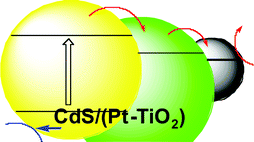Effects of the preparation method of the ternary CdS/TiO2/Pt hybrid photocatalysts on visible light-induced hydrogen production†
Abstract
A variety of combinations of CdS, TiO2, and

- This article is part of the themed collection: Materials chemistry for hydrogen storage and generation

 Please wait while we load your content...
Please wait while we load your content...